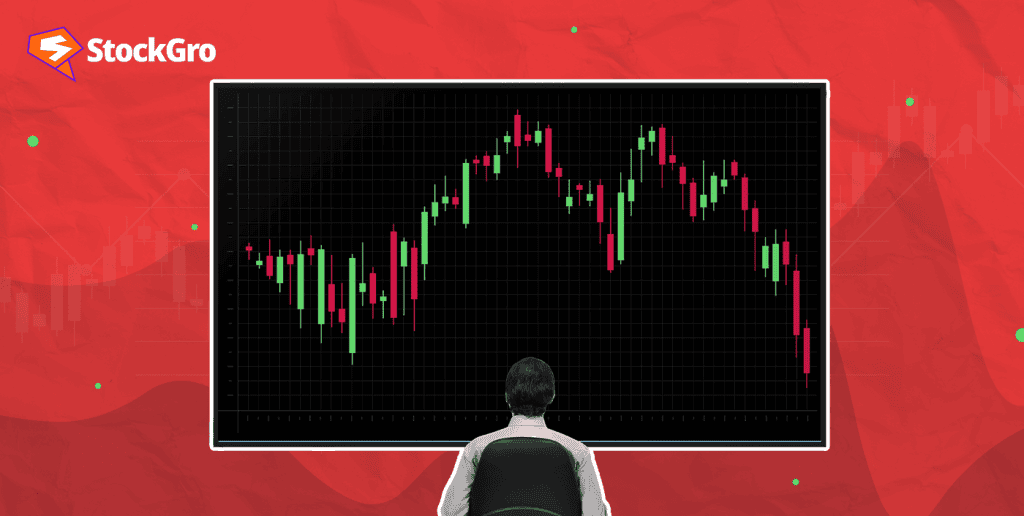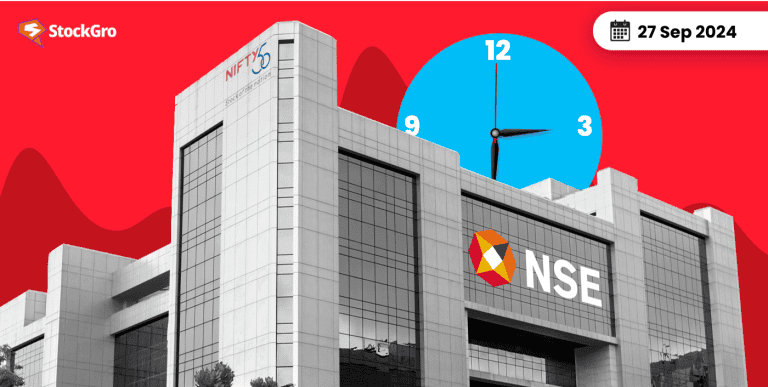
Leaving your investments unchecked can be a gamble. Economic policies, industry shifts, and unforeseen company news can quickly change the value of your assets. Sitting back might mean missing crucial signals.
Your holdings can encounter setbacks like corporate scandals or executive turnover, impacting future prospects. Acting on early signs helps avoid potential pitfalls before they become costly.
Financial markets are in constant motion. Strategies that succeeded a few months ago may now face headwinds. Reviewing your positions ensures you adapt to new conditions, helping you stay ahead and meet your financial objectives.
Ready to learn how to track your stock portfolio performance effectively? Let’s dive into the strategies.
Also read: Key risks in investing in the stock market
Breaking down stock market monitoring
Stock market monitoring goes far beyond simply checking share prices or calculating returns. It’s a multifaceted process that requires evaluating the businesses you’ve invested in from various angles like financial stability, operational strength, leadership quality etc..
It’s also about understanding the broader perspective. Events such as economic policies, industry trends or technological advances, might impact the value of your holdings. Even a single piece of news or a rumour spreading online can create ripples in investor perception.
Risk assessment is another crucial part. A sudden leadership change, a credit rating downgrade, or a corporate scandal can rapidly alter a company’s trajectory. Awareness of such factors helps prevent unwanted surprises.
In essence, monitoring is about weaving together insights from different areas like company performance, market movements and global events. It’s a constant process of analysis, interpretation, and preparedness.
You may also like: Modern Portfolio Theory (MPT) and its relevance today
10 proactive approach to your stock portfolio tracking
Monitoring your stock portfolio is about understanding the companies you’ve invested in. Stay alert to company news and updates. Review quarterly performance and note any shifts in the industry. Sudden policy changes can have a big impact.
Don’t react to every market noise. Not all headlines require action. Prioritise factors that influence long-term success.
Here are 10 key areas to watch.
Stay up-to-date with company-related news
Keeping track of updates about the firms you invest in is crucial. Shifts in government policies, industry regulations, or leadership changes can influence a company’s future. A new product launch might lift market confidence, while negative publicity can trigger a downturn.
Consider PolicyBazaar, under PB Fintech. News about its possible move into healthcare recently caused its shares to drop nearly 21% from the year’s high. The uncertainty led to this reaction.
Setting up news alerts for companies in your stock portfolio can help you stay informed about such developments as they happen. Understanding these events helps you make timely choices, ensuring your stock portfolio stays on course.
Monitor trends in the industry and market
Watching shifts in sectors and overall markets is essential. New policies, technological breakthroughs, or changes in consumer demand can impact different fields. Take clean energy as an example. In recent months, shares in this sector have surged, driven by India’s focus on sustainable development.
Renewable energy stocks have seen remarkable growth recently. Some have climbed by 450-500% in the last year. Their stock values soared as the country emphasised green strategies. Support through incentives, future goals for emissions reduction, and rising demand all contributed. Spotting such patterns can guide better investment decisions.
You may also like: What is trend analysis?
Review annual and quarterly earnings reports
Company earnings reports offer a window into business health. They go beyond profits, covering expenses, cash flow, and strategic initiatives. Observing these details over time can reveal important trends or warning signs.
Take Nykaa’s latest Q1 FY25 update. It showed a 25% rise in gross merchandise sales and a 150% boost in net income. Following this news, the stock jumped by 18.6%, signalling market optimism. Analysing such data can offer a clearer understanding of a company’s market direction.
Pay attention to major corporate announcements
Corporate events often signal a shift in a company’s direction. Mergers, new ventures, or changes in leadership can influence investor sentiment. Securities & Exchange Board of India mandates that listed companies disclose such news on their websites and on stock exchange platforms.
Take RailTel as an example. When it received Navratna status, a recognition from the government, its stock value rose by almost 5%. This surge reflected market confidence in the company’s new-found autonomy. Tracking such shifts can help guide your investment decisions.
Observe shareholding patterns
Evaluating shareholding trends is crucial when managing your stock portfolio. Companies publish this data every quarter, allowing you to see changes in promoter activity. If you notice an increase in their ownership, it often points to confidence in the firm’s future. On the flip side, consistent reduction can signal potential challenges or uncertainties ahead.
Consider EaseMyTrip as a case. Its share price dropped by 7% when Nishant Pitti, a key promoter, sold off 2.6% of his holdings, valued at ₹176.5 crore. This action caused market jitters.
Keep an eye on promoter share pledges
Promoter pledging can indicate underlying financial strain. It means using company equity as security for loans. Failure to repay can force creditors to offload these holdings, causing a dip in stock value.
This often creates panic among investors, leading to further market pressure. Public companies disclose such pledging every few months, so regular checks are essential. A high level of pledged equity suggests potential risks that warrant caution.
Check credit ratings
Credit ratings offer a snapshot of a company’s financial health and its ability to manage liabilities. Agencies like CRISIL, ICRA, and CARE analyse the firm’s finances and publish scores periodically. A strong score signals good management, while a weak one raises concerns about liquidity issues.
Regularly reviewing these scores helps spot early warning signs. An unfavourable rating suggests that the business may face challenges in meeting its obligations. Always consult official agency reports for the most reliable information on your investments.
Use portfolio tracking tools
Portfolio trackers help you manage your holdings effectively. They offer a comprehensive view of performance, updating you on stock movements and overall market conditions. This approach saves time and reduces the need to check each stock individually.
Many platforms also feature custom alerts, notifying you of significant shifts in value or market dynamics. These updates are useful for periodic evaluations but avoid reacting to every minor fluctuation. Use the data to fine-tune your strategy, keeping a focus on long-term objectives.
Stay tuned to social media sentiment
Online platforms can sway investor sentiment quickly. Twitter, LinkedIn, and financial forums often become sources of market-moving news or discussions. A single viral moment can ripple through the market.
Take the Coca-Cola episode involving Cristiano Ronaldo. During a press conference, he moved Coke bottles aside, urging people to “Drink water.” This seemingly minor act reportedly erased $4 billion from Coca-Cola’s valuation. Set alerts for relevant keywords to keep track of sudden changes related to your holdings. This helps you react promptly and thoughtfully.
Review your investment strategy regularly
Effective stock portfolio monitoring goes beyond checking stock prices; it involves reassessing your strategy to see if it still fits your financial goals and market conditions. Markets shift, and your plan should evolve as well.
Begin with the distribution of your assets. Has any sector become too concentrated, increasing your exposure to risk? Market dynamics can disrupt the initial setup, so it’s crucial to revisit and adjust as needed.
Next, evaluate each asset. Persistent underperformance requires investigation. Is it a short-term issue or a sign of deeper trouble? This helps you decide whether to stay invested, exit, or explore other opportunities.
Life changes can also affect your investment plan. Shifts in income, expenses, or upcoming goals might mean it’s time to rethink your approach. The aim is to align your investments with where you are now and where you plan to go.
If uncertain, seek advice from a financial expert. Professional insight can offer clarity and ensure your investments remain aligned with your targets.
Bottomline
Effective stock portfolio management requires looking beyond simple price movements. It’s about recognising shifts in business performance, economic forces, and industry changes.
By staying updated and analysing various factors, you position yourself to respond thoughtfully to evolving conditions. A flexible, strategic approach ensures your investments remain on course, whatever the market may bring.
FAQs
- How do I monitor my investment portfolio?
Check how the companies you’ve invested in are performing. Read their financial reports and watch for news updates. Keep an eye on market movements and industry shifts. Adjust your asset mix when necessary. Set alerts for key developments, but avoid reacting to every small change. Be aware of potential risks like credit issues or shareholding alterations. Use digital tools to organise all this data. Stay updated, but aim for long-term stability rather than daily fluctuations
- What is stock price monitoring?
It involves watching how a stock’s value fluctuates over time. You notice spikes, drops, and any emerging patterns. It’s also about understanding what might cause these shifts, like company news or economic events. Some use alerts or apps to stay informed without needing to check constantly.
- Who monitors the stock market?
Different groups keep a close watch on stocks. Regulatory bodies, like Securities & Exchange Board of India or SEBI, ensure rules are followed. Stock exchanges, such as NSE and BSE, oversee trading and data flow. Analysts study patterns and company health. Investors and traders follow prices for their strategies. Financial news outlets provide key updates. All contribute in unique ways to a fair and transparent system.
- How do I keep track of all my stocks?
A portfolio app can help organise your stocks in one view. Keep an eye on news, earnings, and market movements. Set notifications for key events or price shifts. If you like hands-on methods, consider using a simple log or spreadsheet. Go through your holdings regularly to stay informed.
- What is a portfolio performance?
It’s an evaluation of how your assets have performed over a period. You look at growth, income, and changes in value. Factors like dividends, interest, and market shifts are considered. It helps you see if you’re on track to meet your financial targets.

